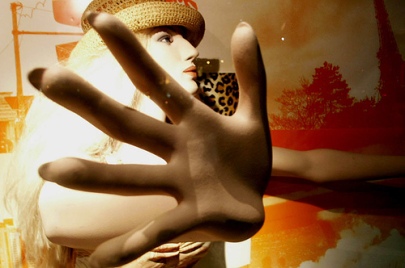The “just a slap” fallacy

Dear directors,
If you ever hear yourself say the words “it’s just a slap,” please pause. Reflect. Then google “fight director [your city].”
I understand the temptation not to. It’s one slap in a two-hour show. There’s probably someone in the cast who could figure it out. If they put together a good-looking stage slap, where everyone feels safe and in control, great! But if it doesn’t look good, you may be tempted to scrap it — or maybe there seems to be no way to hide a stage slap in the first place.
I am writing to tell you that a contact (“real”) slap is not your only recourse. Hand meeting face on stage isn’t a real slap, anyway; it requires more control than a non-contact slap, and more rehearsal, not less. The motion is so close to being natural, it’s usually happening in an emotional moment, and there’s less than an inch of leeway in each direction: you don’t want to hit the ear in the back, the nose in front, the eye above, or the jaw below. If a contact slap is really the best choice, a fight director will take your actors through a series of lead-ups and help them communicate in order to keep them comfortable and safe — yes, both of them: the slapper needs confidence in the process as much as the slappee. It’s also entirely possible that a small adjustment to the orientation or hand placement will make a stage slap work.
There’s something gendered about the “real slap,” too. It’s likely that in your play, a woman slaps a man. Have you ever seen a man “just slap” a woman on stage? I’m not dismissing the possibility, but I haven’t. All actors are under a lot of pressure to be good sports, and men in particular are bombarded with messages about being physically and emotionally “tough.” But it’s perfectly reasonable to not want to be struck in the face repeatedly, and if that’s the case with your actor, he should feel comfortable speaking up. In this as in all things, drawing boundaries is the healthy thing to do.
If anything’s going to take away from your scene, it’s not the audience seeing the knap or a little air between hand and face — it’s your actors anticipating the moment with distress, tensing up, flinching, and generally feeling uncomfortable in what should be a safe space. The audience will worry for them. Please say you would, too.
Peace, love, and illusory ass-kicking,
Your friendly local fight blogger
Photo by Juin Hoo, CC-licensed for noncommercial use.
Excellent post.
Also, a thing that isn’t discussed enough is that slaps are often major turning points in character relationships and should be given appropriate dramaturgical attention.
I once saw a student production of A Delicate Balance that ruined the slap moment by having the actors do a real slap. It was hard to see and happened too quickly to follow. And the actor who was struck was visibly uncomfortable afterwards, which did not help the production either.